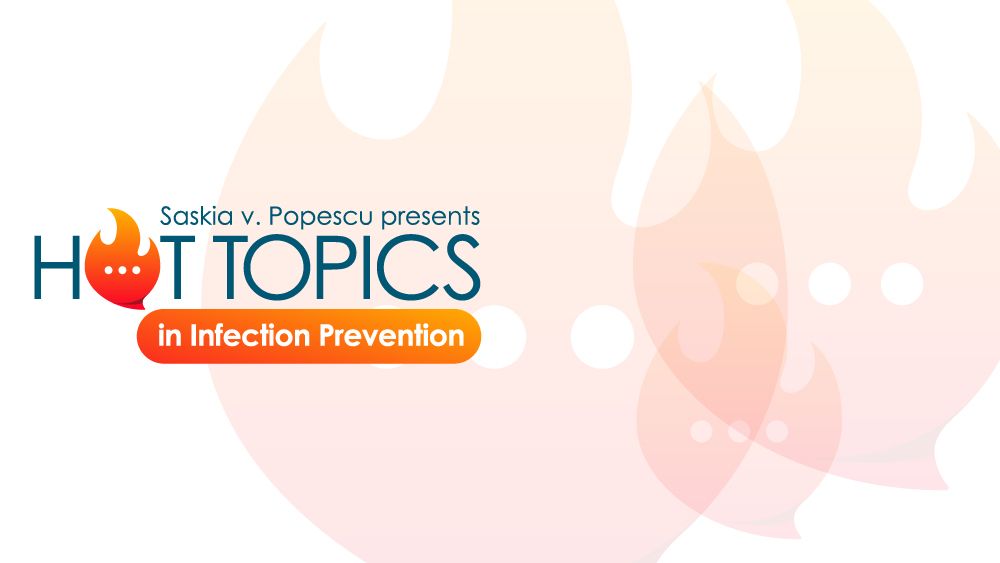Hot Topics in IPC Today: COVID-19 Cases, a New Variant, UV-C Disinfection, and More
In this Hot Topics in IPC, Saskia v. Popescu, PhD, MPH, MA, CIC, gives her expert outlook on the latest on COVID-19, UV-C, and Rocky Mountain Spotted Fever, and more.
Hot Topics in IPC Today with Saskia v. Popescu, PhD, MPH, MA, CIC

Increasing COVID-19 Cases and a New Variant
Here we are again…sort of? While recent higher rates of COVID-19 cases represent an increase in cases, I’m not sure I would call this a surge (yet). The CDC has reported increases across a few metrics: up 18.8% hospitalizations in the last week (meaning 15,067 hospitalizations) and +17.6% deaths in the previous week. Most states reported increases, with 26 noting a “substantial increase” in hospitalizations, which is worrisome. The hard part of this is that we’re substantially data. Since the US pulled back most of its testing and data reporting infrastructure, this leaves us very dependent upon a few things: CDC data reporting, local public health data (which feeds into the CDC), hospital-specific data (ie internal), and wastewater surveillance. Our hospital-based data is beneficial, and now that many aren’t doing admission testing, that translates to even less information.
Moreover, hospital-based data allow us to identify health care-onset cases. A new study reiterated this: “Our models indicated that hospital-onset SARS-CoV-2 infection rates were lower among hospitals with greater than 50% of hospitalizations tested for SARS-CoV-2 infection at admission vs those with 25% to 50% tested.” The same study found that of the 4.4 million hospitalizations reviewed, 171k involved COVID-19, and 4.4% were found to be health care-associated and health care-onset. In short, this means that we should be doing admission testing, especially during rising cases.
On top of this, we’re assessing a new variant, BA.2.86, which has seen a stark increase in cases as more efforts are made to identify how far spread it is. A tracking system has shed light on this, showing cases in Denmark (10 so far, which is the highest), the US, Sweden, the United Kingdom, South Africa, Portugal, Israel, and Canada. It’s too early to know if this will cause Omicron-level disruption or what it means for cases come this fall. In response, though, efforts are being made to increase vaccine readiness and deployment a bit earlier, likely in September instead of October.
It is time to start booster reminders for staff! This also serves as an important time to discuss respiratory virus season restrictions and how COVID-19 might be incorporated into it, given the nonemergent state we are now in with SARS-CoV-2.
Here are a few more things to consider:
- UV-C Disinfection—Is the juice worth the squeeze? “Pooled analysis indicated no statistically significant reduction in [Clostridioides] difficile(incidence rate ratio [IRR], 0.90; 95% confidence interval [CI], 0.62 to 1.32) or VRE (IRR, 0.72; 95% CI, 0.38 to 1.78) infection rates with the use of UV-C disinfection systems. The risk of gram-negative rod infection was reduced (IRR, 0.82; 95% CI, 0.68 to 0.99), but the studies reporting this outcome were few.”
- Rocky Mountain Spotted Fever (RMSF), dogs, climate change, and why we should consider discussing One Health more in infection prevention and control (IPC): Often in IPC, we are focused on health care-associated infections, and rightfully so, but as COVID-19, mpx, and Ebola have shown us, our world of IPC is much bigger and only getting more so. This article is a critical reminder of how interconnected environmental, human, and animal health is.









